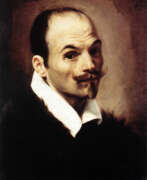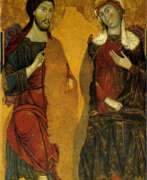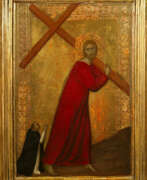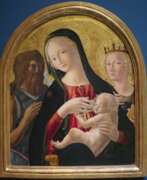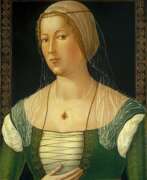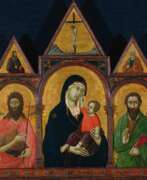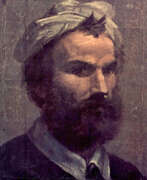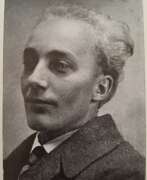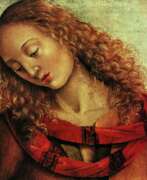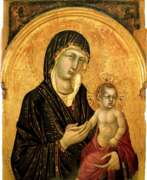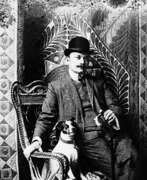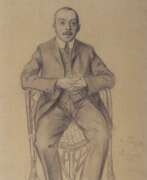Icon painters Portrait
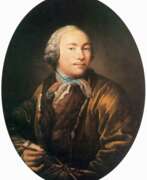

Ivan Petrovich Argunov (Russian: Иван Петрович Аргунов) was a distinguished Russian painter of the 18th century, celebrated for his significant contribution to portrait art. As a serf born into the Argunov family, who were established artists themselves, Ivan's talent was nurtured and supported by his patrons, leading to a unique position within the cultural and artistic hierarchies of his time. His specialization in portraiture allowed him to capture the essence of Russia's social elites, including members of the imperial family, as well as ordinary Russians, thereby providing a wide-ranging visual documentation of the era's societal strata.
Argunov's art is noted for its meticulous attention to detail, vibrant realism, and the emotional depth he brought to his subjects. His portraits are more than mere representations; they are intimate glimpses into the lives and characters of his sitters. Among his most famous works is the portrait of Princess Natalia Petrovna Golitsyna, showcased in the Tretyakov Gallery in Moscow. This particular piece stands out for its intricate portrayal of fabric textures and the detailed rendering of facial expressions, which have been lauded for their lifelike quality and depth.
Argunov's legacy extends beyond his artistic achievements; he played a pivotal role in shaping the course of Russian portraiture. His works are preserved in major museums and galleries across Russia, serving as a testament to his skill and the cultural richness of his time. For collectors and experts in art and antiques, Argunov's paintings are not just historical artifacts but are cherished for their aesthetic value and the insight they offer into 18th-century Russian culture.
We invite enthusiasts and collectors to stay connected with us for updates on new product sales and auction events related to Ivan Petrovich Argunov. By signing up, you will gain exclusive access to the finest pieces of Russian art and antiques, ensuring you never miss an opportunity to enrich your collection with works by one of Russia's most esteemed artists.
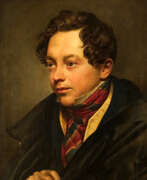

Pyotr Vasilievich Basin (Russian: Пётр Васильевич Басин) was a Russian painter, born in 1793 and passed away in 1877, renowned for his large-scale religious, historical, and portrait artworks. A distinguished member of the Imperial Academy of Arts in Saint Petersburg, Basin's career was marked by a significant period in Rome, where he studied under a fellowship and produced nearly a hundred paintings.
Basin's artistic legacy includes notable works such as the allegorical figures for the Winter Palace and several religious scenes for the Saint Isaac's Cathedral and Kazan Cathedral. His contributions extend to teaching roles at the Imperial Academy, where he influenced future generations until his retirement due to a progressive eye disease.
Basin's works are prominently displayed in the Russian Museum among other locations, serving as a testament to his skill and dedication to the arts. For collectors and enthusiasts looking to explore more about Basin's works or receive updates on sales and auctions featuring his art, signing up for specialized newsletters can provide timely and exclusive information.
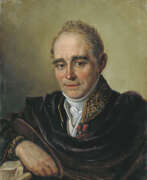

Vladimir Lukich Borovikovsky (Russian: Влади́мир Луки́ч Боровико́вский), a distinguished Russian artist of Ukrainian Cossack origin, was renowned for his mastery in portrait painting and ecclesiastical art. Born in Mirgorod, now Myrhorod, Ukraine, in 1757, Borovikovsky lived in Ukraine until the age of 31 before moving to St. Petersburg. His journey into the art world began under unusual circumstances when Empress Catherine II was impressed by his allegorical paintings, leading him to relocate to Saint Petersburg and adopt the more aristocratic surname Borovikovsky.
Borovikovsky's work epitomizes the sentimentalism era, capturing the essence and inner beauty of his subjects with a unique sensitivity and elegance. His ability to convey the nuanced emotions and dignified personalities of his sitters through intimate and detailed portraiture earned him acclaim, particularly among the Russian imperial family and nobility. Throughout his career, he produced about 500 portraits, with 400 surviving today, including notable figures such as Catherine II, Paul I, and Alexander Kurakin, as well as the celebrated "Portrait of M.I. Lopukhina".
In his later years, Borovikovsky's focus shifted towards religious painting, contributing significantly to the Kazan Cathedral and other ecclesiastical sites in St. Petersburg. Despite facing challenges, including court intrigues and a personal struggle with mental discord and alcohol, he left a lasting legacy through his art, which remains highly regarded for its depth, sincerity, and technical skill.
Collectors and experts in art and antiques cherish Borovikovsky's work for its historical significance and profound emotional resonance. His paintings, a fusion of classicist and sentimental styles, continue to inspire and captivate audiences, preserving the legacy of one of Russia's most gifted portraitists.
For updates on exhibitions and auction events featuring Vladimir Lukich Borovikovsky's work, sign up for our newsletter. Stay informed about the latest discoveries and opportunities to add a piece of history to your collection.
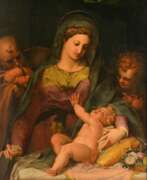

Peter Candid was a Flemish painter, tapestry designer, draughtsman and sculptor.
Pieter Candide worked mainly in Italy and Germany. He was an artist at the court of the Medici in Florence and at the Bavarian court of Duke Wilhelm V and his successor Maximilian I in Munich.
His paintings range from historical paintings, portraits, mythological scenes and allegories. He created large altarpiece images as well as complex decorative designs.
Candide's style was characterised by a combination of Italian and Flemish influences, with a particular emphasis on detailed, realistic depictions of the human form.
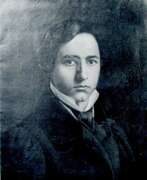

Franz Ittenbach was a German painter of the mid-nineteenth century. He is known as a historical and religious painter, associated with the Düsseldorf School of painting and considered one of the most important representatives of the Nazarenes.
Ittenbach created works mainly with religious subjects, which were characterized by simplicity of composition, nobility and correctness of drawing. Among his significant works are frescoes in various churches and altarpieces for temples. Ittenbach was a popular artist in court circles, a member of many European academies and the recipient of many medals and awards. He also painted portraits, although his main focus was on church art.
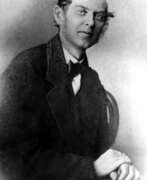

Ivan Kuzmich Makarov (Russian: Ива́н Кузьми́ч Мака́ров) was a Russian artist of the second half of the 19th century. He is known as a painter, one of the greatest portraitists of his time, a representative of academism.
Ivan Makarov in his portraits was able to present the model in the most favorable light, while maintaining the realism of the image. He was especially good at female and children's portraits. The artist's manner of painting is distinguished by the rigor of drawing, restraint of coloring, often built on a combination of tones - soft pink, silvery, bluish, light gray. The master often inscribed the composition in a round or oval shape of the picture.
The artist also painted many icons for churches and other religious paintings.
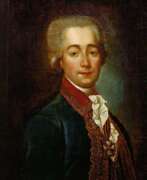

Leontiy Semenovich Miropolskiy (Russian: Леонтий Семёнович Миропольский) was a Russian painter, portraitist, copyist, and icon painter, prominent in the late 18th and early 19th centuries. He became an academician of the Imperial Academy of Arts after demonstrating his skills with a portrait of Gabriel Ignatievich Kozlov, an adjunct professor at the academy. His works include portraits that are highly individualized and closely resemble those of his teacher, Dmitry Levitsky.
Miropolskiy's contributions to Russian art extend beyond portraits; he was also an accomplished icon painter. He crafted icons for St. Andrew's Cathedral in Kronstadt, which, although the cathedral itself has since been destroyed, marks a significant part of his legacy in religious art. His paintings are housed in prestigious locations such as the State Russian Museum and the State Tretyakov Gallery, reflecting his lasting impact on Russian cultural heritage.
For art collectors and enthusiasts interested in exploring more about Miropolskiy's works or potential acquisition opportunities, consider signing up for updates related to his paintings. This subscription will keep you informed about new discoveries and auction events specifically tied to Miropolskiy's artistry.
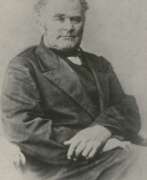

Timofey Yegorovich Myagkov (Russian: Тимофей Егорович Мягков) was a Russian iconographer and portrait painter, active during the 19th century. Born in 1811 and trained at the Moscow School of Painting, Sculpture and Architecture, Myagkov is celebrated for his significant contributions to Russian religious and secular art.
Myagkov's work spans from intricately painted icons to evocative portraitures, many of which were recognized for their depth and mastery during his time. Notable among his works is the "Family Portrait," which earned him a silver medal and is preserved in the Tretyakov Gallery. His murals and icons decorated several churches across Russia, some of which have survived to this day despite the country's turbulent history.
Many of Myagkov's works are housed in prestigious locations, such as the State Historical Museum in Moscow and the Tretyakov Gallery. His artistic legacy is marked by his ability to blend traditional Russian iconography with the more expansive techniques of portrait painting, making his works unique artifacts of Russian art history.
For those interested in exploring the rich tapestry of Russian art, keeping updated on exhibitions and auctions featuring Timofey Myagkov's work can be enriching. You can sign up for updates here [insert link], ensuring you don't miss out on new insights and opportunities related to this distinguished artist.
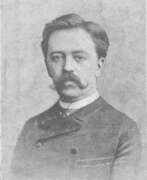

Ivan Fyodorovich Seleznyov (Russian: Иван Федорович Селезнёв) was a Russian and Soviet artist of the last third of the 19th - first third of the 20th centuries. He is known as a painter of academic direction and a teacher.
Ivan Seleznyov worked in historical, portrait and domestic genres, as well as painted landscapes and still lifes. He became famous for his paintings on the subjects of Russian history, life scenes and realistic genre portraits. He also created and restored frescoes in churches in Kiev and was one of the organizers of the Kiev Fellowship of Religious Painting.
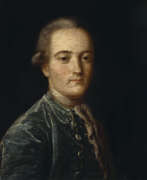

Mikhail Shibanov (Russian: Михаил Шибанов) was a Russian painter renowned for his contributions to the genre of portrait painting during the 1780s. His origins are humble; he was born into serfdom under the ownership of Prince Grigory Potemkin, with no definite records of his birth date available. Shibanov's artistic education took place at the Academy of Arts where he studied household painting from 1770 to 1780.
Shibanov's work primarily captured the life of peasants and Russian nobility through his realistic and genre paintings. Notably, he painted "Peasants' Meal" in 1774 and "The Celebration of the Wedding Agreement" in 1777. His mastery is exemplified in the portraits of significant historical figures, including the "Portrait of Count Alexander Dmitriev-Mamonov" from 1785, and the "Portrait of Empress Catherine II with Traveling Dress" created in 1787. These paintings are preserved in prominent Russian museums such as the Tretyakov Gallery and the Russian Museum.
Despite the limitations of his status and era, Shibanov's work left a lasting impression in Russian art history, embodying the characteristics of the Neoclassicism movement. His exact death date remains uncertain but is recognized as post-1798.
If you're captivated by the artistry and historical significance of Mikhail Shibanov, sign up for updates to stay informed about new findings, upcoming sales, and auction events featuring his work. This subscription ensures you remain connected to the fascinating world of Russian neoclassical art and Shibanov's lasting legacy. Subscribe today to enhance your collection and deepen your knowledge.
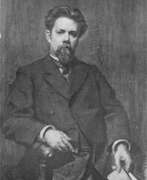

Nikolay Gustavovich Schilder (Russian: Николай Густавович Шильдер) was a Russian painter known for his genre and battle scenes. Born in 1828 in Kharkiv, Schilder became an influential figure in Russian art. He studied at the Imperial Academy of Arts and was influenced by the works of Pavel Fedotov, which led him to focus on genre painting.
Schilder's notable works include "The Temptation" (1857), "Family Happiness" (1858), and "The Repayment of Creditors" (1861), the latter earning him the title of academician. His detailed and emotive portrayal of everyday life and historical events made his works highly regarded in art circles.
Several of his paintings, including portraits of prominent figures such as Alexander III and Maria Feodorovna, are displayed in museums like the State Russian Museum and the Orsay Museum in Paris.
Stay updated on new sales and auction events related to Nikolay Gustavovich Schilder by signing up for our updates.
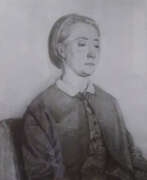

Helena Skirmunt was a Polish, Lithuanian, and Belarusian artist of the mid-19th century. She is known as a painter, graphic artist and sculptor.
As an artist, Helena Skirmunt painted landscapes, portraits, and icons; as a sculptor, she created numerous portrait medallions and religious works. She was also famous for creating "historical" chess pieces, choosing as their theme the Viennese campaign of the Polish King Jan III Sobieski, who defeated the Turkish army in 1683.
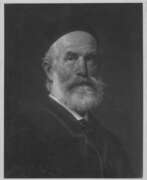

Ludwig Thiersch was a German and Greek painter of the second half of the nineteenth and early twentieth centuries. He is known as a painter who specialized in historical, mythological and religious subjects, as well as an iconographer.
Thiersch began his career as a painter by creating paintings of Hindu mythology. In 1852 he traveled to Athens, where he became interested in Byzantine art. One of his most famous works in iconography was the decoration of the iconostasis in the Greek church of St. Etienne in Paris. The master also worked in Vienna and St. Petersburg, creating frescoes and icons.


Ivan Philippovich Tupylev (Russian: Иван Филиппович Тупылев) was a Russian artist of the last quarter of the 18th - first quarter of the 19th centuries. He is known as a painter and graphic artist, a master of historical and portrait genres.
Ivan Tupylev painted historical paintings, portraits of royalty and other nobles, as well as icons for churches. As a graphic artist, he illustrated the "Metamorphoses" by the ancient Roman poet Ovid and a book devoted to Palladianism - the architecture of early classicism - published in Russia.
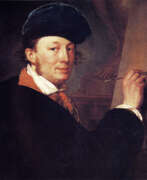

Alexander Gregoryevich Varnek (Russian: Александр Григорьевич Варнек) was a distinguished Russian painter. Known primarily for his portraits, Alexander Varnek captured the essence of figures in Russian society with a finesse that made him a notable artist of his time. He was a student under the guidance of Dmitry Levitzky and Stepan Shchukin at the Imperial Academy of Arts, where he later returned as a professor and advisor.
Alexander Varnek's artistry was celebrated for its masterful drawing, harmonious coloring, and the ability to capture close resemblances and appropriate lighting in his portraits. His conscientious execution and avoidance of embellishment in his works earned him high regard among contemporaries. Some of his notable works include portraits of Madame Khatova, Count Alexander Stroganov, and Alexey Olenin, along with other subjects like "Head of a Young Turk" and "Boy with Dog".
His life was intrinsically linked to St. Petersburg and the Imperial Academy of Arts, reflecting a career that spanned teaching, creating, and contributing significantly to Russian art. Alexander Varnek's journey included a period spent abroad in Rome, where he further honed his craft, leaving behind a legacy encapsulated in his portraits and other artworks that continue to be celebrated in the world of art.
For collectors and experts in art and antiques, Alexander Grigorievich Varnek's body of work offers a glimpse into the rich tapestry of Russian portraiture and its evolution during his lifetime. To delve deeper into his life and explore his creations, consider signing up for updates related to Varnek and stay informed about exhibitions, sales, and auctions of his works.
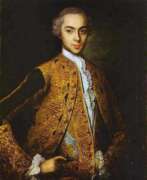

Ivan Yakovlevich Vishnyakov (Russian: Ива́н Я́ковлевич Вишняко́в) was a distinguished Russian artist, celebrated for his contributions to painting. As a prominent figure in the realm of culture and art, Vishnyakov's works are a testament to the rich tapestry of Russian heritage, bridging the gap between tradition and innovation in the art world.
Vishnyakov specialized in painting, bringing scenes of Russian life, portraiture, and religious themes to life with a vibrancy and detail that was unparalleled in his time. His ability to capture the essence of his subjects made him a favored artist among the Russian nobility and the Orthodox Church. Vishnyakov's paintings are known for their depth, realism, and emotional expressiveness, qualities that have ensured his lasting legacy in the world of art.
Several of Vishnyakov's masterpieces are housed in prestigious museums and galleries, offering art lovers and collectors a glimpse into the soul of 18th-century Russia. His works not only reflect the aesthetic sensibilities of the period but also provide valuable insights into the cultural and societal norms of his time.
For collectors and experts in art and antiques, Vishnyakov's oeuvre represents an invaluable link to Russia's artistic past. His contributions to painting and sculpture continue to inspire and captivate audiences, underscoring the timeless appeal of his art.
To stay informed about new product sales and auction events featuring works by Ivan Yakovlevich Vishnyakov, we invite you to sign up for updates. This subscription is your gateway to exploring the exquisite beauty of Russian art and ensuring you never miss an opportunity to enrich your collection with pieces of significant historical and cultural value.
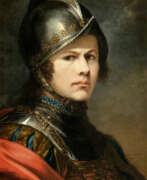

Feodosy Ivanovich Yanenko (Russian: Феодосий Иванович Яненко) was a Russian artist born in 1762 and notable for his contributions to religious and portrait painting. Trained at the Imperial Academy of Arts under Gabriel Ignatievich Kozlov, Yanenko's talent was recognized early in his career. In 1795, he was assigned to the Academy for his studies of the naked human figure, and by 1797, his painting "Travellers in a Storm" earned him the rank of academician.
Yanenko is best known for his religious artworks, including several images for the Kazan Cathedral in St. Petersburg. His prowess in portrait painting is exemplified by his work housed in the Tretyakov Gallery, Moscow—a portrait of Emperor Paul I when he was Crown Prince, painted in 1798.
His works are cherished for their historical significance and artistic quality, making them of great interest to collectors and art historians alike. For those passionate about Russian art from the late 18th century, Yanenko's contributions remain an essential part of the discussion.
For updates related to new product sales and auction events featuring Feodosiy Ivanovich Yanenko's works, consider signing up for our newsletter. This subscription will keep you informed about all the latest developments and opportunities to acquire pieces by this distinguished artist.
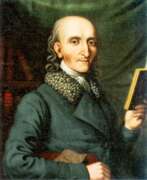

Iosif Zmii-Miklovshik was an outstanding Ruthenian artist, iconographer and portraitist who laid the foundations of professional fine arts in Transcarpathia. His repertoire included iconostasis, frescoes, altarpieces, portraits and picturesque scenes from the life of the Transcarpathian people with a strong ethnographic touch.
Zmii-Miklovshik worked in various cities of Hungary, leaving his creative trace in church murals. After his return from Vienna, he created many works on religious and domestic themes, including paintings such as "Zemplin Wedding", "At a Party", "Procession for the Consecration of Water on Epiphany", and others.
Iosif Zmii-Miklovshikalso familiarised the world with the ethnographic side of the Ruthenians by illustrating the book "Etnografia Ruthenium" by Slovak ethnographer Jan Čaplovič. His works for church altars and iconostases, as well as his many other creative achievements, make him a notable artist in the history of Transcarpathia.
